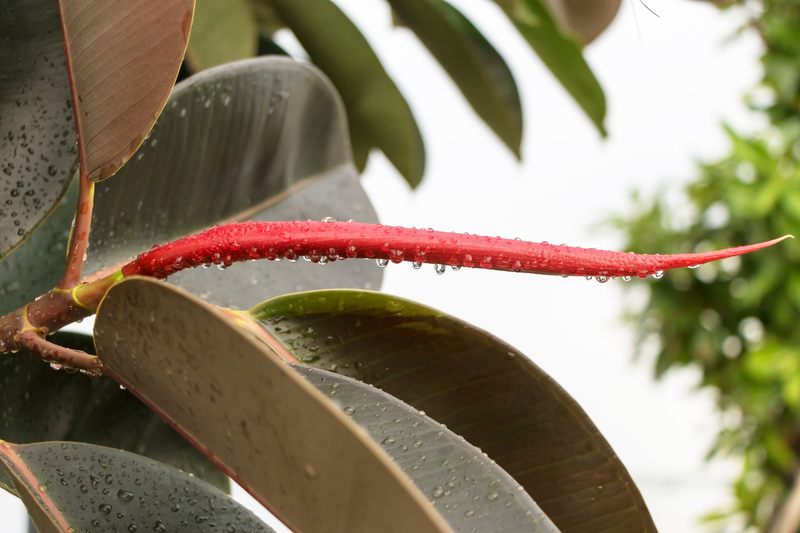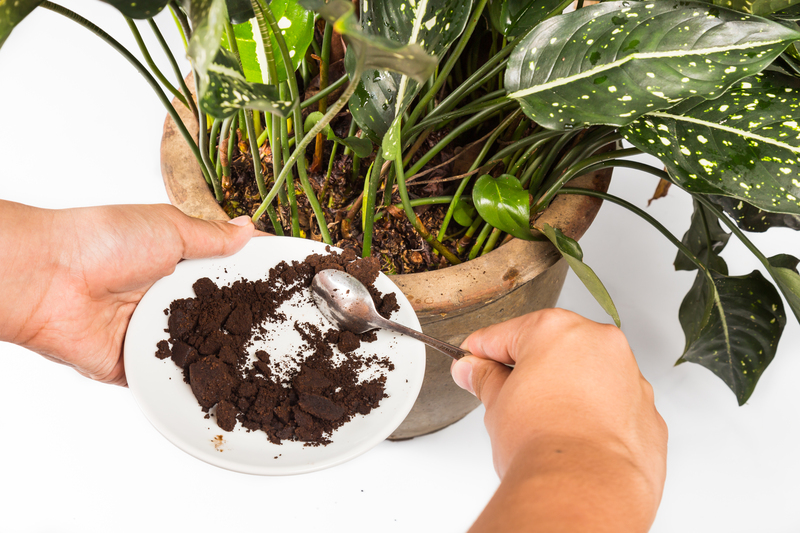Revolutionizing Garden Aesthetics with Hedge Techniques
Posted on 14/09/2025
Revolutionizing Garden Aesthetics with Hedge Techniques
Gardening has long since evolved from simple plant cultivation to an artistic and expressive medium. In modern landscaping, hedge techniques have quickly gained traction as pioneering methods to revolutionize garden aesthetics. In this comprehensive guide, we'll explore the creative and practical aspects of hedging, uncovering its transformative power in gardens of all sizes. Whether you're a novice gardener or a landscaping enthusiast, this article will showcase innovative ways to elevate your outdoor spaces using cutting-edge hedge strategies.

Understanding Hedges: More than Just Boundaries
Traditionally, hedges have been associated with property boundaries or privacy screens. Today, however, garden hedges serve as living sculptures that can define, unify, and beautify any landscape. By employing advanced hedge techniques, gardeners can create multi-dimensional outdoor art, foster biodiversity, and even increase property values.
What Are Hedge Techniques?
Hedge techniques refer to the methods and approaches used to plant, prune, shape, and maintain shrubs and trees primarily for decorative or practical purposes. These practices range from traditional straight lines to elaborate topiary and innovative vertical hedge gardens. Let's delve into how these approaches are redefining garden design.
Traditional vs. Modern Hedge Design in Landscaping
There are countless ways to incorporate hedges into your garden. Traditional approaches have seen hedges crafted as impenetrable walls or mazes, using species such as boxwood or yew. Modern techniques, however, emphasize flexibility, creativity, and environmental harmony. Here's a comparison:
- Traditional: Dense, geometric forms for formality and privacy.
- Modern: Free-flowing, organic shapes, mixed-species hedges, and eco-friendly designs.
Benefits of Modern Hedge Techniques
- Visual interest: Add depth, color, and movement to your garden layout.
- Wildlife habitats: Integrate pollinator-friendly or native plant choices to attract birds, bees, and butterflies.
- Microclimate regulation: Hedges act as windbreaks and provide shade, contributing to plant health.
- Noise reduction: Thick hedges serve as natural sound barriers, enhancing tranquility.
- Low maintenance: With the right selection and design, modern hedges require less pruning.
Key Hedge Techniques to Transform Your Garden
To truly revolutionize your garden's aesthetic, you should experiment with these modern hedge methods. Let's look at each technique and how it can boost your landscape's appeal.
1. Living Walls and Vertical Hedges
Vertical gardens or "living walls" are perhaps the most innovative use of hedging today. These upright plantings breathe life into small spaces, courtyards, and urban environments. By training climbing plants like ivy or honeysuckle on trellises or metal frames, you can create a living green tapestry. This technique not only saves space but also provides insulation and air purification.
- Install professional-grade panels or DIY with reusable frames.
- Choose drought-tolerant or native species for easier care.
- Incorporate herbs or flowering varieties for added interest.
2. Topiary Artistry - Sculpting with Shrubs
The art of topiary involves training and trimming hedges into artistic shapes: spheres, spirals, animals, and even abstract designs. This garden hedge technique adds a playful yet sophisticated touch to outdoor spaces.
- Start with pliable species such as boxwood, privet, or holly.
- Use templates or frames for precision shapes.
- Regular maintenance ensures sharp, defined lines.
Tip: Employ topiary as focal points or to frame entrances for dramatic impact.
3. Mixed-Species and Biodiverse Hedging
Rather than relying on a single type of plant, modern garden designers recommend mixed-species hedges. This approach mimics nature, increasing resilience and attracting a broader variety of wildlife. Mixing evergreen with deciduous shrubs, or incorporating fruiting varieties, not only ensures visual interest year-round but also fosters an eco-friendly environment.
- Layer tall and short species for multi-tiered effects.
- Blend flowering shrubs for seasonal color variation.
- Include berry-producing plants to nourish birds.
4. Ornamental Hedging along Paths and Borders
Using ornamental hedges to line pathways or demarcate borders is a timeless way to guide visitors through your garden. Compact, low-growing shrubs like lavender, boxwood, or rosemary not only define spaces but provide delightful scents and texture.
- Maintain formal borders with crisp trims.
- Allow informal borders to blend into perennial beds for a cottage-garden feel.
- Experiment with curving or zigzagging lines for a more dynamic design.
5. Sustainable and Drought-Tolerant Hedge Techniques
As climate concerns rise, sustainable hedging is at the forefront of landscape innovation. Opting for native and drought-resistant plants minimizes water use and maintenance needs. Practices such as mulching and drip irrigation further boost sustainability, without sacrificing beauty.
- Select Mediterranean species, such as Pittosporum or Photinia for hot, dry areas.
- Group plants with similar water needs.
- Incorporate permeable pathways to maximize rainwater absorption.
Design Tips: Combining Hedge Techniques for Maximum Impact
The real magic lies in artfully combining these hedge styles throughout your landscape. Here are some expert strategies:
- Contrast shapes and textures: Pair rounded topiary with loose, flowering hedges.
- Create transitions: Use taller hedges as backgrounds, with low borders leading up to them.
- Add focal points: Place unique topiary at intersections, entrances, or centerpieces.
- Experiment with color: Select plants with variegated foliage, or alternate green and purple-leaved varieties.
Seasonal Hedge Care and Maintenance
An often-overlooked aspect of hedge gardening is proper year-round care. Regular maintenance not only preserves form and vigor but ensures that your innovative designs last for decades. Here's a brief guide:
Spring
- Prune dead or damaged branches for new growth stimulation.
- Apply compost and mulch to enrich the soil.
Summer
- Water deeply during dry spells, especially with newly established hedges.
- Monitor for pests and disease.
Autumn
- Trim for shape before plants enter dormancy.
- Plant new shrubs for establishment before winter.
Winter
- Inspect for damages caused by frost or wind.
- Protect the base with mulch if needed.
Remember, investing a little time each season can ensure your hedges continue to revolutionize your garden's appearance year-round.
Choosing Plants: The Best Species for Modern Hedge Techniques
The choice of plants directly influences the success of your hedging project. Here are some favorites for contemporary landscapes:
- Boxwood (Buxus): Ideal for formal hedges and topiary.
- Privet (Ligustrum): Fast-growing, perfect for privacy.
- Hornbeam (Carpinus betulus): Holds its leaves through winter, offering year-round structure.
- Photinia 'Red Robin': Vibrant red new growth for visual impact.
- Hawthorn (Crataegus): Flowering and fruiting, suitable for wildlife-friendly hedges.
- Lavender: Low, aromatic, and beautiful in borders.
When selecting species, consider growth rate, leaf size, maintenance needs, and the desired final shape. Pairing slow-growers with fast-growers can yield stunning, long-lived results.
Hedge Techniques for Small Gardens and Urban Spaces
Urban gardeners need not feel left out. Many advanced hedge techniques can be adapted to compact patios, balconies, or townhouse yards:
- Use containers: Plant dwarf shrubs or compact topiary in pots to define zones.
- Try espalier: Grow fruit trees flat against walls or fences.
- Install pocket living walls: Hang modular plant pockets to create vertical interest.
Every garden, regardless of size, can benefit from creative hedge design, making outdoor living more beautiful and inviting.
Sustainability and the Environmental Impact of Hedging
In the quest to revolutionize garden aesthetics, it's vital to prioritize sustainability. Hedges not only act as carbon sinks, absorbing CO2, but also reduce heat island effects in cities. By using native or well-adapted species, you can minimize chemical inputs, promote native fauna, and enrich your local ecosystem.
- Native hedges: Enhance biodiversity and require less water or fertilizer.
- Plant diversity: Reduce pest outbreaks and create resilient plantings.
- Natural pruning techniques: Avoid heavy machinery to lessen emissions and soil compaction.
Eco-friendly hedge practices ensure your beautiful garden also contributes to a healthier planet.
Inspiration from Around the World: Revolutionary Hedge Gardens
Looking for ideas? Many world-class gardens serve as living testaments to the power of cutting-edge hedge designs.
- Topiary Gardens in England: From Levens Hall's clipped wonders to Hidcote's lush borders, UK estates showcase age-old and contemporary hedge artistry.
- French Formal Gardens: Versailles' parterre de broderie demonstrates geometric precision and opulence.
- Modern Urban Parks: Vertical gardens in Singapore's Gardens by the Bay illustrate sustainability and vertical greening on a grand scale.

Your Hedge Revolution: Getting Started
Ready to embark on your own garden hedge transformation? Here's how to begin:
- Assess your space: Determine light levels, soil conditions, and available area.
- Sketch a plan: Incorporate layers, textures, and standout focal points.
- Choose the right plants: Research species suited to your local environment.
- Start small: Experiment with a border or a single topiary before scaling up.
- Maintain regularly: Invest in sharp shears and commit to seasonal care.
Through innovative hedge techniques, every garden--from sprawling estate to compact urban retreat--can be revolutionized into a living masterpiece. Thoughtful design, expert plant selection, and regular care are your keys to achieving both beauty and sustainability.
Conclusion: The Future of Garden Aesthetics is Green and Creative
In conclusion, modern hedge techniques have truly revolutionized garden aesthetics. By moving beyond the boundaries of tradition and embracing creative possibilities, gardeners can sculpt, color, and enliven their outdoor spaces like never before. From vertical walls to artistic topiary, mixed-species borders to sustainable native plantings, there is a hedge solution for every style and situation. Transform your landscape today with forward-thinking hedge strategies--and watch your garden flourish for years to come.

